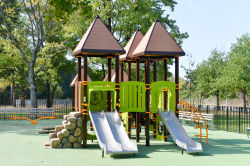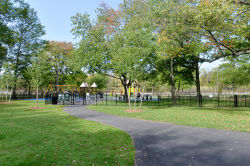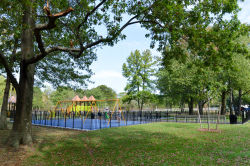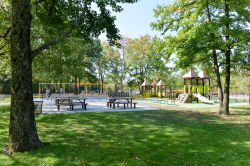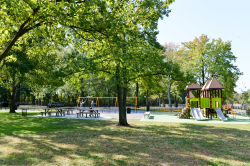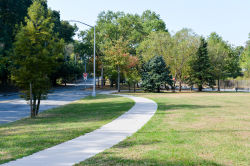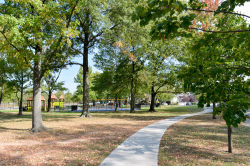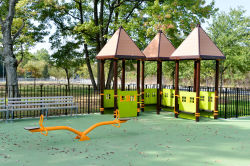Ida Court
Ida Court
This parkland has been in existence longer than the nearby street that also bears its name. There is no record of the origin of this name. Ida Court and the other parklands that border it were acquired as a part of a land purchase for the Richmond Parkway Outerbridge Crossing to the Cloves Lake Expressway. The City assigned the triangle, bordered by Ida Court (once Heenan Avenue), North Railroad Street, and the Drumgoole Road East along the parkway (now the Korean War Veterans Parkway) to Parks on February 23, 1965.
The Korean War Veterans Parkway, formerly the Richmond Parkway, was laid out by Robert Moses (1888-1981), who was New York City’s Parks commissioner (1934-1960), city construction coordinator, and chairman of the Triborough Bridge and Tunnel Authority. Moses also held nine other state and city positions over the course of his life. Part of his network of parkways for the New York City area, Richmond Parkway was conceived and planned in the early 1930s, but construction did not begin until 1966. The project was completed in 1972. The parkway now extends southwest from the southern end of LaTourette Park, then turns west at Huguenot Avenue, interchanges with the West Shore Expressway, and continues across the Outerbridge Crossing of the Arthur Kill, terminating in New Jersey.
The Korean War Veterans Parkway was originally intended to be 9.5 miles long, but a coalition of residents, environmentalists, and some public officials protested against its eastern portion. In 1966 Mayor John V. Lindsay (1921-2000) ordered a halt to all construction north of Richmond Avenue, and Parks commissioned a study to determine an alignment with the “least social cost.” The study determined that Moses’s route would have inflicted a large social cost, destroying environmental resources, beautiful scenery, and important city institutions. The commission suggested an alternate route, but environmentalists continued to object, and the extension was never built.
In April 1997, the New York State Legislature renamed Richmond Parkway the Korean War Veterans Parkway, in honor of the men and women who fought in the Korean War (1950-1953). The parkway is scheduled for a large-scale overhaul in the coming years. In 1970, this park was an unnamed and undeveloped triangle, with trees. In the next 20 years, some play equipment and a chainlink fence were added, but the majority of the area remains open and undeveloped. Grass and Sweetgum trees (Liquidambar styraciflua) create an open, flexible space for neighborhood enjoyment.
Check out your park's Vital Signs
Clean & Safe
Green & Resilient
Empowered & Engaged Users
Share your feedback or learn more about how this park is part of a
Vital Park System

